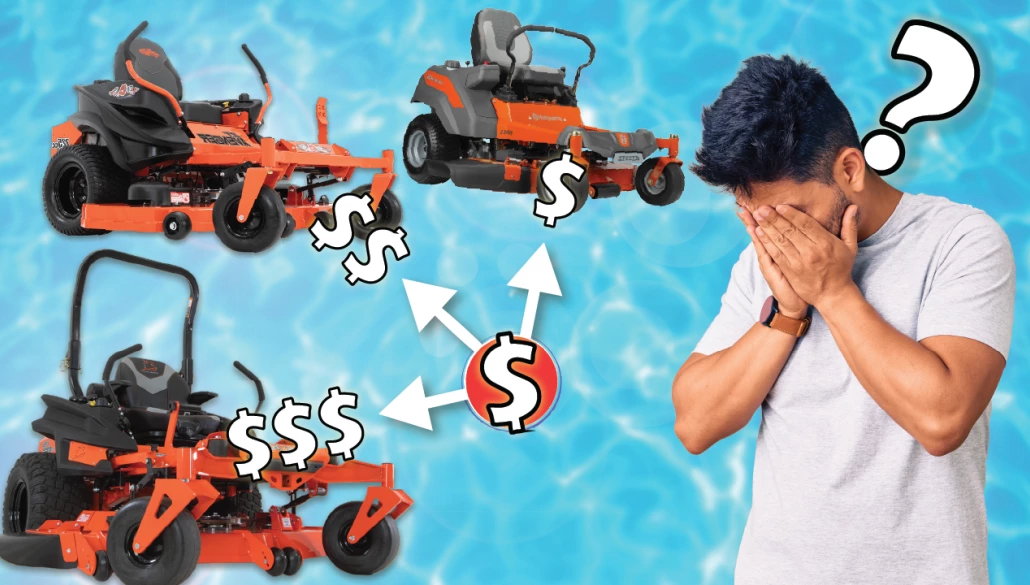It is crucial to consider the fuel type and its use to keep your power equipment in tip-top shape. The right fuel can ensure optimal performance and extend the lifespan of your machine. Taking care of your fuel will also require proper storage and selecting one qualified for the environment.
This comprehensive guide will explore the various aspects of choosing the best fuel for your power tools, including the importance of fuel cleanliness, the significance of octane ratings, the impact of ethanol content, and recommendations for high-altitude climates. Your fuel options include diesel, regular, or even two-stroke fuel.
NOTE: We will have separate articles discussing diesel fuel and two-stroke fuel and their use in equipment.
Importance of Fuel Cleanliness
Before delving into the specifics of fuel types, it's essential to emphasize the importance of fuel cleanliness. Gasoline can deteriorate within as little as 30 days, leading to fuel degradation and potential damage to your engine. You must ensure your fuel is clean and fresh to prevent these issues.
One way to improve fuel quality is by adding a fuel stabilizer to the fuel if your engine is not being used daily. Fuel stabilizers help maintain fuel freshness and protect the engine from damage. It's worth noting that any damage resulting from fuel degradation is typically not covered under warranty, making fuel cleanliness a vital aspect of engine maintenance.
Understanding Octane Ratings
Octane rating is critical when selecting the right gasoline for your power tools. The octane rating measures a fuel's stability and resistance to spontaneous combustion or "knocking" in an engine. In the United States, gasoline is typically classified into three primary grades based on octane rating: regular (87 octane), mid-grade (89-90 octane), and premium (91-94 octane).
Regular Gasoline (87 Octane)
For most small engines such as lawnmowers, leaf blowers, snow blowers, and generators, experts recommend using unleaded gasoline with an octane rating of 87. This is commonly found as regular gas at the pump. It is crucial to avoid using gasoline with an ethanol content higher than 10%. Fuel with 15% or higher ethanol can harm small engines, as it burns hotter and can cause damage to engine parts. (See ethanol discussion below.)
Mid-Grade Gasoline (89 Octane)
In some cases, such as with chainsaws, mid-grade gasoline with an octane rating of at least 89 is recommended. Chainsaws often utilize high-performance engines, and gasoline with a lower octane rating may result in engine knocking. Chainsaws typically operate with 2-stroke engines, which require a specific fuel mixture of oil and gasoline. The typical ratio for this mixture is 50 parts gasoline to 1 part oil. You can maintain optimal performance and protect your chainsaw's engine by using the correct fuel mixture and ensuring an octane rating of 89 or higher.
Impact of Ethanol Content
Ethanol is a grain alcohol derived from corn and sugar commonly blended with gasoline. While ethanol works well in larger engines like cars, it can adversely affect small engines. Ethanol burns hotter in smaller engines, increasing the risk of engine damage. When ethanol and water combine, phase separation occurs, with water settling at the bottom of the fuel tank.
To avoid these problems, choosing gasoline with the lowest ethanol content possible for your small engine equipment is best. Fuels labeled as ethanol-free or those with a maximum ethanol content of 10%. Minimizes the risk of damage to your outdoor power equipment.
SAFETY NOTE:
Gasoline is flammable. Many forget that gasoline fumes are incredibly flammable and explosive. Gasoline should be stored in a well-ventilated area that prevents fumes from becoming trapped. These storage locations should avoid open flames, sparks, and heat sources.
Fuel Stabilizers
Fuel stabilizers keep fuel fresh. It does this by preventing the formation of gum deposits. Some stabilizer manufacturers say they can prevent this from occurring for up to two years.
Gummy deposits impact the sensitive areas of motors by restricting flow and hampering starting or even running well. These areas include the carburetor and fuel lines.
Stabilizers work by stopping the oxidation process. It prevents the fuel from breaking down. This is especially important for fuels containing ethanol. Stabilizers prevent oxidation and absorb water before fuel can.
Consult the manufacturer’s recommendations on the proper use and mix of the stabilizer.
Stabilizers can be added to a storage container or directly into a motor’s tank. It is recommended that the motor run for at least 10 minutes if the stabilizer is added directly to a motor’s tank.
Remember that fuel must be fresh before adding a stabilizer to it.
Choosing the Right Fuel for Your Lawn Mower
Now that we've covered the basics of fuel cleanliness, octane ratings, and ethanol content, let's explore some practical tips for choosing the right fuel for your lawn mower and outdoor power equipment.
- Follow the manufacturer’s recommendations.
- Regular unleaded gasoline with an octane rating of 87 and less than 10% will serve outdoor power equipment well.
- Adding a Fuel Stabilizer will help prolong gasoline lifespan and protect gasoline from degradation.
- Do not leave unused gas in the equipment’s tanks for an extended period.
- Store fuel properly in a clean and safe location that is away from any potential ignition sources.
By following these tips and selecting the right fuel for your outdoor power equipment, you can ensure optimal performance and prolong the life of your valuable equipment.
Conclusion
Selecting the best fuel and handling it correctly for your equipment is essential for
- Maintaining equipment performance
- Extending engine life
- Preventing costly repairs
Tractor Bob
is prepared to answer your questions about fuel for your outdoor equipment. Their team can answer questions on any other topics you would like to know more about.
Tractor Bob is committed to helping buyers find the right solution for their power equipment needs. You can also learn more about using your power equipment on this site.
Reach out to one of Tractor Bob’s product experts to select a machine that fits your needs.






![YouTube Thumbnails [Recovered]-04](https://www.tractorbob.com/asset/69127047769a7/YouTube-Thumbnails-%5BRecovered%5D-04.png?w=1030&h=585&fit=crop&fm=webp)

